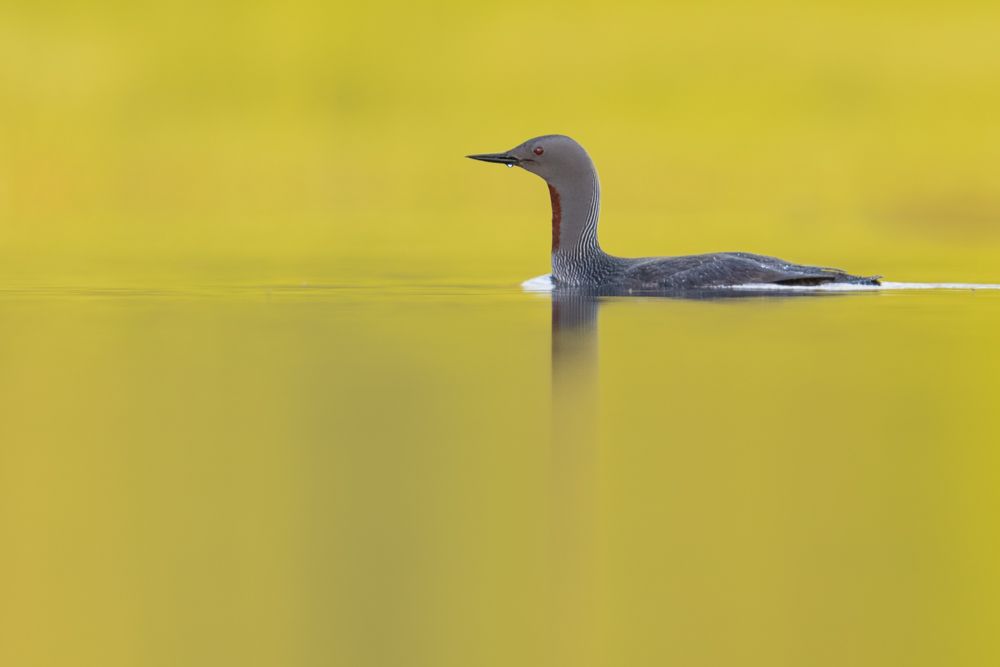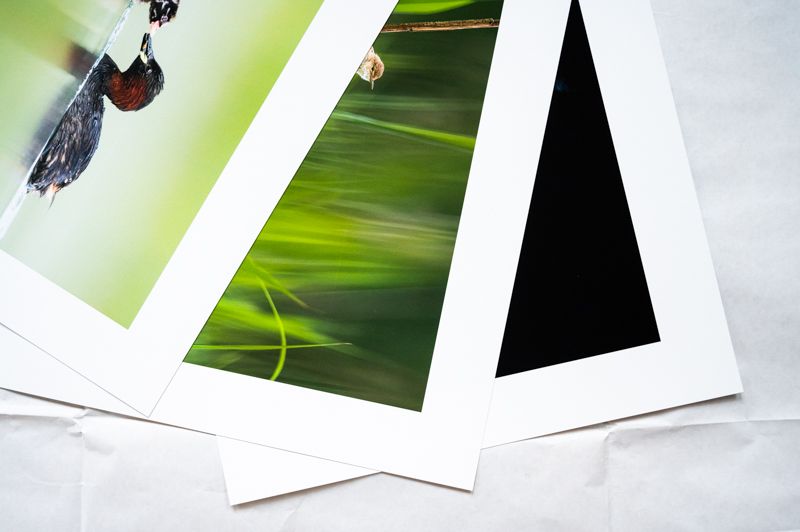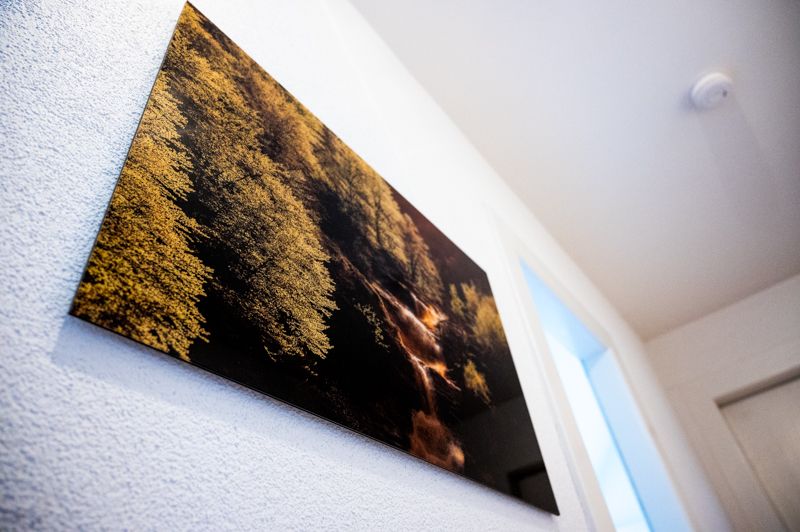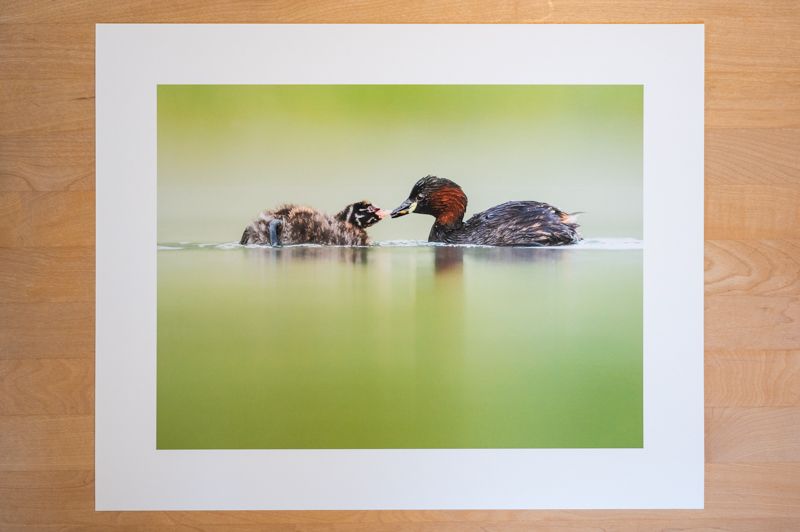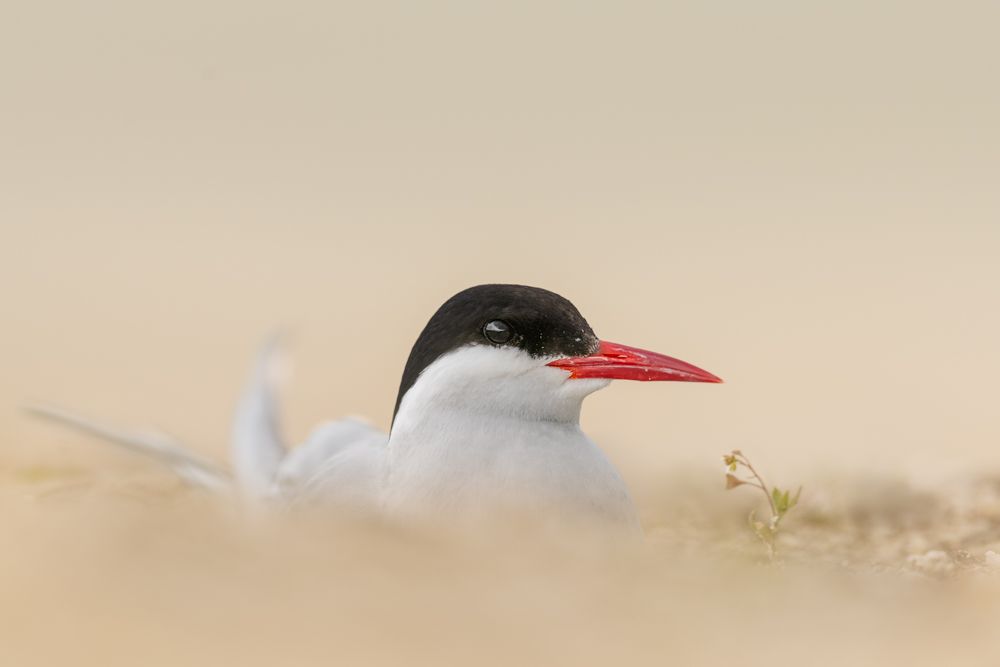Nature photography in Norway
Having been to Norway once before in 2018, I had been wanting to go back ever since I came home from this trip. This summer, that wish finally came true, although not quite as originally planned.
Actually, the intention was to spend 6 weeks in Norway. First three weeks with my parents in the west of Norway and then another three weeks with a colleague around the Lofoten Islands. However, due to Corona entry restrictions, only the 3 weeks around the Lofoten became reality. I spent the other 3 weeks with my family in Germany. Nevertheless, it was worth it and I was able to observe and photograph various species of animals in a way that I have never been able to do before. You can find some of the photos here.
At the end of the three weeks in Germany, my colleague and I took the train from Hamburg towards Sweden until we finally arrived in Norway near the Lofoten. But the journey by train turned out to be more than tedious. The first surprise came as soon as we arrived in Hamburg. Instead of three carriages, only one was going to Copenhagen. In a completely overcrowded train we went to Copenhagen, where we had to change trains.
But the train did not depart from the place indicated on the display boards. So we missed this train, although we were actually at the right place according to the app and the display boards. By the time we realised that something must be wrong, the train had already left. The next train, which then left at the right place, was again completely overcrowded. On top of that, at the next station, a railway employee had the idea of reallocating half the train. So we had to move to the front compartment, which was already completely full. With all our luggage, that was anything but pleasant.
By the time we arrived in Malmö, our connecting train had long since left. But the train was subject to reservation and we now had to find out if we could just get on the next train. Only where? The information desk at the station was closed on Saturday in the middle of the day and the telephone customer service seemed to be on holiday as well. So all we could do was ask the staff of the next train if there was still a seat available. The person in charge of the train did not listen to us and instead of helping us in any way, we were loudly told that the train was already fully booked and that we should contact the other train companies to see how we could solve the problem.
This was also exactly the problem as up to now we had a different provider for each route and the train we originally wanted to take in Malmö belonged to a different company than the one that was now running an hour later. Booking a new seat was not an option either, as the first free seats departed 7 days later. So we had to watch as the train finally left for Stockholm more or less empty and we had to think about whether and how we could get to Norway at all. Finally, we had two options: ask for the next train or take the bus to Oslo and from there fly to Narvik and do exactly what we originally wanted to avoid. We waited for the train in the hope that we might still be able to get a seat. We were lucky and the ticket inspector actually found a compartment for us. We were joined by another person who also missed the train in the same way we did. Two others who also missed the train had already decided to take a bus to Stockholm.
Finally, we arrived in Stockholm in the evening, where we changed to the train to Boden departing just an hour later. The train had accumulated so much delay during the night that we ended up in Boden in front of our hotel, which was unfortunately already closed. After a good half hour, someone finally answered the phone and we still got into our room.
All in all, we were still lucky, because only a few hours later there was an accident on the previously completed route. The following trains were all at least 10 hours late.
Already in Boden, I was able to photograph the first animals. For example, there were many families of wigeons grazing relatively tamely along the riverbanks. At a pond in the middle of the settlement, I was also able to photograph little gulls for the first time. They were breeding together with black-headed gulls in the pond and were flying around regularly. After several unsuccessful attempts, I finally managed to take a photo of the little gull.

1/800 | f/ 4 | ISO 360 | 500mm

1/3200 | f/ 4 | ISO 1250 | 500mm

1/800 | f/ 4 | ISO 4500 | 500mm
The next morning we took the train, again with a good hour and a half delay, to Narvik, or rather just to the border of Norway. While the trains continued empty to Narvik and then fully croweded again towards Sweden, we had to get off shortly before the border. We were already aware of this, so we ordered a taxi to the border. But the taxi was not allowed to pick us up at the border, so we had to walk a good 2 km to the border with all our luggage. At the border, the taxi picked us up and we drove to Narvik in an Audi e-Tron. Somewhere in between we had to present our ID's and Covid certificates to a policeman. So we arrived in Narvik fully electric, where we took over our car the next day. Unfortunately, it was not electric, but there was plenty of room for us to sleep in the back. Actually, this was only the "emergency solution" in case the weather would have been too bad for our tent. As it turned out, we couldn't even sleep once in our tent...
After we took over the car at Narvik airport and we completed our equipment, we then drove all the way to Tromsø. Besides a long hike in the surrounding mountains, where I was able to photograph golden plovers, mountain finches and sand plovers, among others, a lake full of red-throated divers was one of the big highlights of the whole trip. Fortunately, the weather for the "night" was extremely good, so I photographed until 4am that night.
This was to be the last time for quite a while that we could see the sun for more than 10 minutes at a time. Stormy weather brought us a lot of rain and the wind made it even more unpleasant. Together with the rather cool temperatures, the whole thing was rather inconvenient even in the van that we converted into a camper. A resident we talked to later even spoke of it as the worst weather in over 12 years.
We therefore decided to spend the nights at camping sites, where we usually had a room or even a kitchen where we could dry our things. Because of the constantly changing conditions, it was difficult to do any major hikes. Seemingly out of nowhere, we were surrounded by fog from one moment to the next. This fog sometimes turned out to be an intense downpour, both not really ideal conditions for hiking and photography. Especially as after a few days the hiking trails looked more like a stream bed than a path. Returning from a hike with dry shoes was an impossibility and stepping back into half-wet shoes the next day was a torture.
We braved the weather conditions as best we could and still did some hiking, even if some of it was rewarded with no view at all. Sometimes, however, the clouds lifted for a brief moment before we were swallowed up in thick fog again.

1/4 | f/ 10 | ISO 100 | 14mm

75s | f/ 8 | ISO 160 | 30mm

1/100 | f/ 6.3 | ISO 320 | 55mm
When we returned from one of these hikes, a short time later we found ourselves in front of three moose in our car. An extremely impressive encounter. Even in our Peugeot Expert, which at 5 metres is actually a very big car, we suddenly felt quite small. Unfortunately, I didn't really get any good photos, especially as it was already quite dark. Nevertheless, the encounter was another one of the big highlights of the whole trip.

1/640 | f/ 4 | ISO 5000 | 500mm

1/250 | f/ 4 | ISO 5000 | 500mm
One day on another drive through the untouched landscape I discovered a young fox at the edge of the "road". He was very trusting and even ran after me. Unfortunately, because he was mostly on the road, I couldn't get a good image of him, as the road is always visible in the wide-angle shot. After a while, the young fox slowly lost interest in me and moved on. Since the fox was near a farm, I don't rule out the possibility that the fox was being fed there.

1/1250 | f/ 4 | ISO 450 | 500mm

1/1600 | f/ 1.8 | ISO 100 | 50mm
Ad

1/1600 | f/ 1.8 | ISO 100 | 50mm

1/1250 | f/ 4 | ISO 360 | 500mm

1/2000 | f/ 1.8 | ISO 100 | 50mm
On the way, we kept meeting people who were also on holiday or who simply lived here. Again and again there were exciting conversations and we could not only use our English in real life, but also learn a lot about Norway. These exciting encounters were another highlight of the trip and I won't forget them quickly.
Towards the end of our trip, we suddenly had another surprise. One morning while we were driving off, various lights suddenly came on in the speedometer. So we were forced to visit a garage. But the Peugeot technician was on holiday at the time and after consulting with our rental car company, we were advise to simply drove on with various flashing lights on the speedometer. Fortunately, it was only the warning lights and we were able to drive on without any further problems.
When we reached the end of Lofoten, we went to Rost, where we stayed overnight with a school colleague of mine. From there we took a small wooden boat to various surrounding islands. One of them was part of what was originally the largest puffin colony in the world. Unfortunately, however, the population has declined by over 80% in the last 50 years. While in 1979, 1.4 million puffins were still breeding on the islands off the Lofoten Islands, today there are only about 240,000. The reasons for this, apart from the main cause of climate change, are mainly overfishing and bycatch. For example, there were some years when the food for the puffins and their young was completely gone.
Despite the dramatic decline, there were still very many puffins and razorbills on site. We were not quite in peak season, so some of the seabirds had already left the rocks again. But the signs were still alarming and clear. Even though I had no direct comparison to before, I too noticed that the colony was not the same as before. A large part of the rocks was empty and only the washed-down bird droppings and old nests showed where there used to be lively activity and now only comparatively few birds were breeding. I was all the happier when I was still able to photograph some of the wonderful animals.
The island was very steep on all sides and only on one side was it possible to climb up carefully. With the heavy backpack it was quite exhausting, but the view and the remaining seabirds made up for it.

1/500 | f/ 4 | ISO 500 | 500mm

1/4000 | f/ 4 | ISO 450 | 500mm

1/1600 | f/ 4 | ISO 1800 | 500mm

1/400 | f/ 8 | ISO 800 | 500mm | Panorama
On the island archipelago I was able to photograph another exciting species, the Odin's partridge. Not only does it look special, but its behaviour is also very strange. The gender roles have been reversed in these birds and it is the females that woo the males with a splendid dress. Conversely, the males only have a rather inconspicuous plumage. When the sun came out on the last day of our trip, I spent the night and the morning with the little birds. My sleeping rhythm was completely disrupted, but the effort was worth it and I was able to photograph not only the red-necked phalarope but also other birds during the whole night.

1/2000 | f/ 4 | ISO 900 | 500mm

1/200 | f/ 4 | ISO 320 | 500mm

1/2000 | f/ 4 | ISO 560 | 500mm

1/2000 | f/ 4 | ISO 900 | 500mm

1/1250 | f/ 4 | ISO 72 | 500mm | Focus Stack

1/1000 | f/ 4 | ISO 400 | 500mm
In the evening we took the ferry to Bodø, where we dropped off our car the following day. We took the night train to Trondheim, where we continued our journey to Oslo in the afternoon. Actually, the onward journey was planned for the morning, but because I couldn't make a reservation either via the official homepage or via Interrail, we didn't find a free train until the afternoon. We spent another night in Oslo before taking the ferry to Kiel. The ferry port was a bit outside Oslo, so we needed another bus. When we finally found the right one, we were unloaded somewhere on a motorway exit and had to walk another 500m to the ferry. In between was another overpass, which was only accessible by stairs. Dragging all the luggage up, we finally arrived at the ferry port. The ferry was actually more of a cruise ship and couldn't be surpassed for kitsch. Unfortunately, there were no tickets without cabins, which made the whole experience even more expensive. Because the train line between Oslo and Germany was extremely complicated due to construction work, we had no other option. Normally, the train would then run through from Kiel to Basel. But the Deutsche Bahn had other plans and used the holiday period for construction work. So we first had to board a completely overcrowded train to Hamburg, before we were then stuffed into an even more crowded ICE to Offenburg. The train was finally so full that we were already seriously considering lying down in the luggage racks above the seats. Fortunately, after 2 hours of travelling, we found a seat.
In Offenburg we had to take buses to Freiburg im Breisgau. There was a traffic jam on the motorway and so we had to drive around the whole thing. Unfortunately, the train in Freiburg did not wait for its guests and left without us. Our bus was one of the first to leave Offenburg. So we had to cram ourselves back into a completely overcrowded regional train heading for Basel Badischer Bahnhof. The track on which this train travelled was of course only accessible by stairs, so we had to lug our luggage up again. From there we continued towards Basel SBB by tram, before finally taking the ICN via Olten back to Biel.
In total, the outward journey from Switzerland took almost 4 days and the return journey from Bodø again 4 days. All in all, 8 days of stress, lugging luggage around, mostly not knowing if and when we would finally arrive at our destination. At least the journey was reasonably environmentally friendly, except for the ferry. But even I have to admit that I questioned my decision against the plane a few times during the journey. All in all, we paid considerably more for the journey than if we had flown including the compensation.
Of course, the situation was somewhat special due to Corona and therefore the seats in some trains were limited. In addition to unfavourable construction work, we were travelling with Interrail for the first time. In retrospect, we probably could have done things a little differently and perhaps saved ourselves a little stress.
Still, I am sorry to say that I can understand travellers by plane within Europe to a certain extent. I can only hope that this will change in the near future. I think night trains in particular are a great thing and hope that more will be offered as soon as possible. Even just one train from Zurich to Stockholm would make things much easier.
Despite the tedious journey and the mostly miserable weather, I would get straight back on the train tomorrow. The landscape, the many animals and the many exciting encounters with locals and other travellers make all the effort forgotten.







